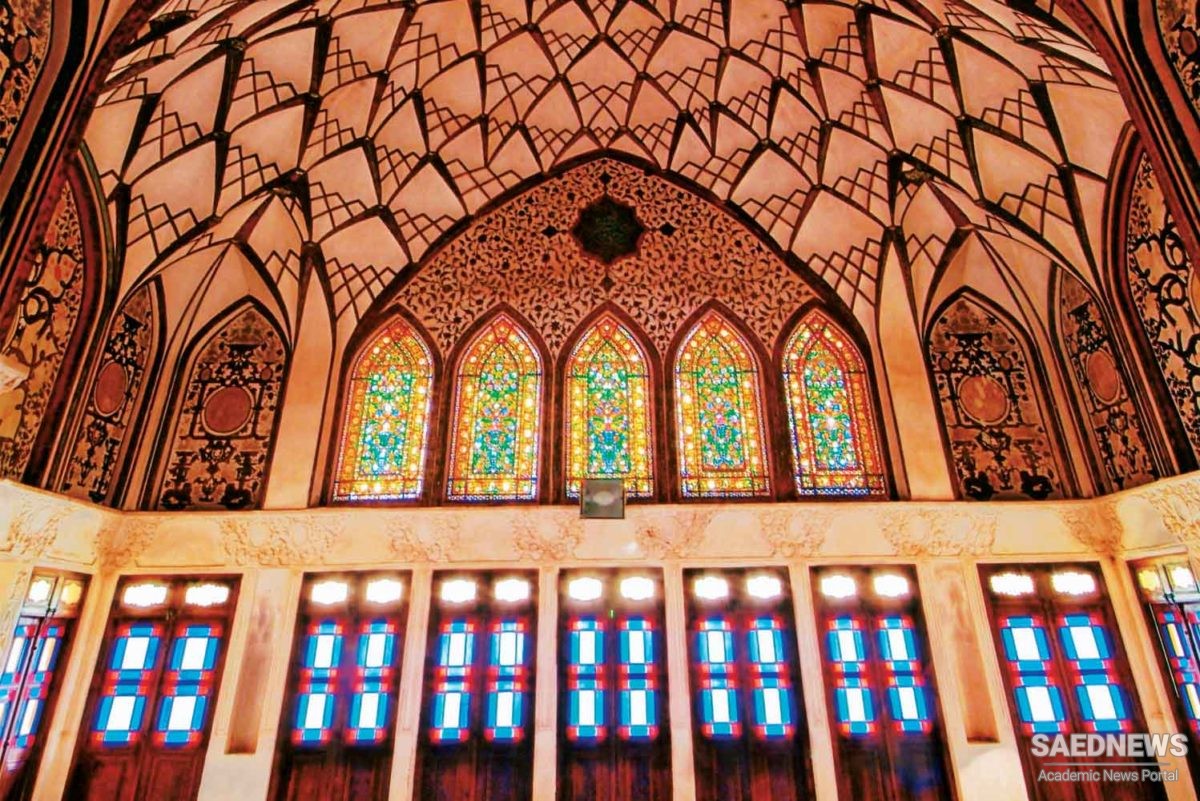The Qajar Dynasty (1722-1924) was a period of Iranian history in which art transformed under the amalgamation of influences; European contact, and prevailing traditional Persian ideologies. Preceding the Qajar era, the Safavid Dynasty’s idea of ‘unity in art’ morphed into an idea of ‘diversity in art’ for the Qajar artist. Europe’s ties and influence on Iran strengthened under burgeoning trade agreements, which were reflected in the transforming styles in art as new technologies were exported to Iran. With the mixing between Persian and European cultures, gender ideals shifted and Qajar artists began to re-appropriate European tropes of the Orient; the blending of ideas and transitioning of mediums are the most distinctive features of Qajar art.
Art in the Safavid Dynasty reflects the early underpinnings of European influences, as apparent in “Garden Gathering,” tiles depicting an encounter between a European merchant and a lady and her court. Though Safavid art consisted traditionally of illuminated manuscripts and textile work focused on unity of the empire, arguably the ambiguity of gender characteristics of Qajar art began in this dynasty and was further explored throughout the Qajar period, as European influences grew stronger. Early Qajar art depicted high levels of gender ambiguity, as Afsaneh Najmabadi discusses, and was part of the diversity the era strived towards.
As the dynasty progressed however, the influence of strict European gender ideals that ‘masculinized’ men and ‘feminized’ women began to override the traditionally gender ambiguous Qajar figures. A painting by Muhammad Sadiq entitled “Embracing Lovers” is a prime example of this transition from the androgynous representation of male and female figures. Additionally, European beliefs that homosociality (a normal part of Qajar culture) was immoral and unnatural impacted Persian societal standards, which also contributed to the shift of more Europeanized figural depictions in art.
The European influences became more apparent as ideals of art continued to blend at the beginning of the 19th century. A Qajar Dado Tile from the mid-late 19th century reflects the transition to a mimetic representation based upon classical European ideologies grown out of the Italian Rennaissance. In tandem, the practice of removing this tile from its architectural context in order to display it individually belies European Orientalist practices.
With the introduction of the camera, art mediums began to shift in the Qajar dynasty; this transition from tiles and paintings to pictorial photography contributed to the rise of Orientalist practices, and eventually, self-orientalization. Under the 4th Shah of the Qajar Dynasty, Nasir al-Din, the camera became a tool through which to demonstrate his power and dynastic affiliations with the use of self-portraits and portraits taken by European figures such as Antoin Sevruguin. Employing many European tropes of the Orient at the time, such as depicting rulers as despotic, Nasir contributed to the rise of self-orientalization. The re-appropriation of European Orientalist tropes, transition of mediums, mix of styles, and shift in gender ideals found in Qajar art directly speaks to the effects of the interplay between European and Persian cultures that was a cornerstone of the Dynasty.


 European Paintings in Early Modern Persia
European Paintings in Early Modern Persia














































